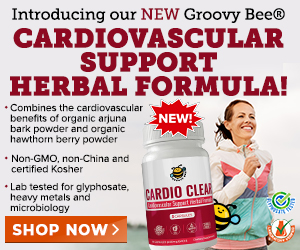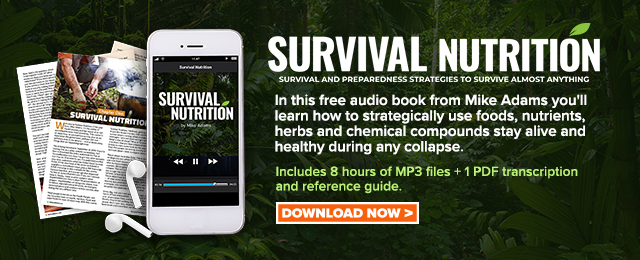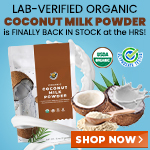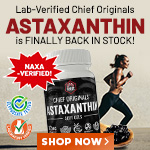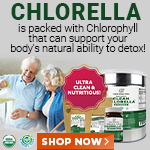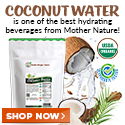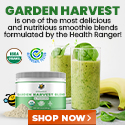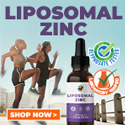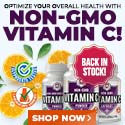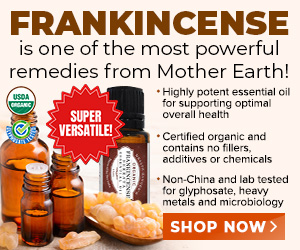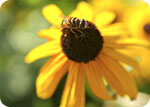
Bee Pollen - A Budget Friendly Food for Health and Healing
Thursday, March 06, 2008 by: Barbara L. Minton
Tags: bee pollen, health news, Natural News
- Chemtrails unveiled: How the CIA and Big Business are manipulating the weather for profit
- Israeli lobbyists boast of controlling US national security policy in leaked AIPAC audio
- Mysterious underwater pyramid off Japan could rewrite ancient history
- Tulsi Gabbard leads charge against the Biden regime’s global censorship of the 'Disinformation Dozen'
- Fauci is back in the limelight, and he’s busy promoting a future COVID or FLU pandemic
- Geoengineers forced into secrecy as public backlash grows: How climate elites are manipulating populations to accept geoengineering experiments
- Analysis: The coming economic collapse, a mass uprising and Trump's three secret weapons to halt the growing revolt
- How to live without electricity: A practical guide for survival and preparedness
- Pfizer's RSV vaccine linked to preterm births as drug giant CONCEALED RISKS from pregnant women in unethical clinical trials
- Shedding light on the dark side of MMR vaccines: How vaccinated individuals SPREAD MEASLES & put the vulnerable at risk
- Aerosolized bioweapons? Strange “diploid biomasses” falling out of the sky in Florida captured under the microscope
- Common household chemicals linked to America's depression epidemic
- The HEART-HEALING power of SEVEN Mediterranean plants
- Kiss Your Genetic Privacy Good-Bye! 23andMe Gets Green Light to Sell Your Intimate Genetic Details to Anyone They Want
- Widespread social and economic unrest: Steve Quayle issues urgent financial warning of imminent asset collapse in new interview with Mike Adams
- Tulsi Gabbard takes aim at censorship: Justice for the ‘Disinformation Dozen’
- U.S. lawmakers investigate Meta over alleged China collaboration
- Mike Adams releases country western hit single: Goin’ Back in Time is Comin’ Home
- Aerosolized bioweapons? Strange “diploid biomasses” falling out of the sky in Florida captured under the microscope
- Widespread social and economic unrest: Steve Quayle issues urgent financial warning of imminent asset collapse in new interview with Mike Adams
- CLOT SHOT PLANDEMIC UNFOLDING: Fibrous, rubbery clots caused by covid injections have prion-like seeding activity
- Analysis: The coming economic collapse, a mass uprising and Trump's three secret weapons to halt the growing revolt
- Kiss Your Genetic Privacy Good-Bye! 23andMe Gets Green Light to Sell Your Intimate Genetic Details to Anyone They Want
- Tulsi Gabbard leads charge against the Biden regime’s global censorship of the 'Disinformation Dozen'
- Mike Adams releases country western hit single: Goin’ Back in Time is Comin’ Home
- DEATH by VACCINE or face PRISON time: Canadian Freedom Convoy leaders CONVICTED for protesting forced vaccination during the Covid Plandemic
- Fauci is back in the limelight, and he’s busy promoting a future COVID or FLU pandemic
- How Israeli military-connected corporations are secretly controlling your online privacy
- European Court of Justice: Healthcare professionals who promoted or administered COVID-19 vaccines are CRIMINALLY LIABLE for any harm caused
- Defunding DEADLY mRNA jabs: Government funding for mRNA technology being scrutinized and sidelined until proven "safe and effective" for real
- Tulsi Gabbard takes aim at censorship: Justice for the ‘Disinformation Dozen’
- Federal employees whine over DOGE's new directive requiring them to do a 5-point summary of weekly accomplishments
- U.S. approves new Russian ambassador as diplomatic thaw continues
- I Want My Bailout Money – new song and music video released by Mike Adams
- Trump administration poised to overhaul crypto regulations with new SEC leadership
- I Want My Bailout Money – new song released by Mike Adams
- Newly released JFK files reveal Pentagon's role in creating Lyme disease and covid in the same lab
- Mike Adams releases country western hit single: Goin’ Back in Time is Comin’ Home
- Analysis: The coming economic collapse, a mass uprising and Trump's three secret weapons to halt the growing revolt
- MEDICAL BOMBSHELL: FDA admits Covid mRNA 'Vaccines' CAUSE CANCER
- Dr. Mike Yeadon releases 15-minute testimony - WATCH - about genocidal intent of COVID “vaccines”
- Trump reverses course on Gaza plan, says “nobody is expelling Palestinians”
- 5 Simple steps to boost your brainpower: How to strengthen executive function in a distracted world
- The Health Ranger releases “Vaccine Zombie” song and music video, using AI-animated zombies for the music video
- California's social media censorship law struck down: A victory for free speech or a threat to online safety?
- Rep. Nancy Mace introduces bill to ban biological males from female facilities on federal property
- EPA advisor admits the agency is funneling billions to climate groups ahead of Trump’s return to White House
- Survival 101: Effective EMF blocking techniques
- Aerosolized bioweapons? Strange “diploid biomasses” falling out of the sky in Florida captured under the microscope
- OpenAI whistleblower who dissented against how the company trained ChatGPT found dead
- Trump Administration cuts 2,000 USAID jobs, places most employees on leave in sweeping reform effort
- A lack of integrity in Academia: Harvard professor found GUILTY of fraudulent research to promote CRT theory
- Sugarcane extract superior to cholesterol-lowering drugs?
- RFK Jr.'s SSRI antidepressant investigation sparks liberal meltdown, exposes Big Pharma's dangerous game
- Red Cross issues warning to stop blood plasma donations from vaccinated people
- Scientists confirm: GENIUS brain function can be spontaneously unleashed in humans without any apparent cause
- EPA advisor admits the agency is funneling billions to climate groups ahead of Trump’s return to White House
- HYSSOP: What research reveals about the health benefits of this ancient holy herb
- Two containers with completed ballots fall out of truck in Florida
- Fully vaccinated about to see “tsunami” of illness and death, warns virologist
- Global leaders unite to clamp down on “misinformation” with UN-backed Cascais Declaration
- Newly released JFK files reveal Pentagon's role in creating Lyme disease and covid in the same lab
- BREAKING: 2025 NDAA authorizes mandatory military draft of WOMEN across America… as Pentagon pursues global NUCLEAR war with both Russia and China at the same time
- Michael Yon warns of a ZIONIST TAKEOVER in Trump’s second administration
- Ozempic and Wegovy weight loss drugs are injectable LIZARD VENOM PEPTIDES that may unleash a devastating wave of organ failure… side effects align with symptoms of SNAKE BITES
- The Health Ranger releases “Vaccine Zombie” song and music video, using AI-animated zombies for the music video
- BOMBSHELL: DNA testing kits are a SCAM to develop ethnic-specific bioweapons
- Israeli soldiers accused of even more torture and abuse in the West Bank
- These 13 countries just signed an agreement to engineer a global FAMINE by destroying food supply
- Mike Adams releases country western hit single: Goin’ Back in Time is Comin’ Home
- NASA admits that climate change occurs because of changes in Earth’s solar orbit, and NOT because of SUVs and fossil fuels
- RFK Jr. clears key hurdle: Sen. Susan Collins backs controversial HHS nominee, signaling a new era for health policy
Bees Are Legendary
The bee was revered and deified in many religious cultures. The Hindu text, Rig-Veda, written in Sanskrit between 2000 and 3000BC, speaks of bees with awe. Vishnu, the powerful preserver and protector of the Hindu trinity, is frequently symbolized by a blue bee sitting on a lotus flower. Kama, the Indian god of love, carries a bow strung with a chain of entwined bees. Cultures worshipping fertility goddesses such as Venus, Diana, Ceres, or Iris, used the bee as a symbol for scared festivities. Next to man, no other living creature has been so highly esteemed by so many diverse cultures.
The bee is believed to be over 80 million years old. The Bible, the Torah, the Koran, the Talmund, the scrolls of the Orient, and the writings of the ancient Greeks and Romans all praised the healing and health properties of foods created by bees. The bee's nectar is mentioned 68 times in the Bible.
The old Caucasus mountaineers used to be beekeepers and knew that the waste matter from bees enhanced health. They would sell their bee products at the market and then eat the leftovers. They exercised every day by working outdoors, got plenty of fresh air, and ate a whole foods diet. Many of them were the same weight they were at age 18, had no disease, and were reported to be over 150 years old.
D.C. Jarvis, M.D. and Charles Mraz, a beekeeper in Vermont, searched to find cases of cancer or deaths from cancer among beekeepers. They were unable to find any deaths from cancer. One keeper had Hodgkins disease which he contracted before becoming a beekeeper. He was cured of it once he started his new occupation and began consuming bee products.
Pollen is the male seed of flowers. It is essential for the fertilization of most plants. All the varieties of flowers in the universe put forth a dusting of pollen, including the many fruiting agricultural crops. One teaspoon of pollen contains approximately 2.5 billion grains, each of which has the capacity to supply those factors necessary for the fertilization and reproduction of a particular species.
As with all species except man, bees seek out and create the most nutritious food to feed to their young. Pollen contains 40% protein, about half of which is in the form of free amino acids that are ready to be assimilated and used by the body.
The Master Craftsmanship of the Bee
Gathering pollen is an arduous process. When bees arrive at flowers, they pick out the best pollen from the millions of grains that are present. Then they scrape the powdery loose pollen from the stamen with their jaws and front legs. They moisten the pollen with a sticky substance secreted from their stomachs so it will adhere to their rear legs. The jagged bristles of their rear legs are used to comb the powder from their coats and front legs. The outsides of their tibias form concave areas used as pollen baskets, into which they press their golden deposits. When each of these baskets is fully loaded, the microscopic dust has been tamped down into a single golden granule.
Many thousands of chemical analyses of bee pollen have been performed, but there are some elements present in bee pollen that are not yet identifiable. When man-made pollen is fed to young bees, they die, even though all the known nutrients are present in the lab synthesized version. These unknown elements may be the reason why bee pollen is so beneficial to so many diverse health conditions.
The Amazing Nutritional Properties of Bee Pollen
The Chinese consider pollen to be an energy enhancer and restorative tonic. Cultures around the world use pollen for improving vitality and endurance, aiding recovery from chronic illness, promoting longevity, regulating intestinal functioning, building blood, preventing infection with its antibiotic properties, restoring lost sexual desire and energy, alleviating menstrual cramps, promoting fertility, alleviating depression and fatigue, alleviating migraine headaches, normalizing cholesterol levels, and treating cravings and addictions. There is mounting evidence that pollen can help overcome retardation and other developmental problems in children. Pollen prevents many side effects of radiation treatment and has anti-cancer properties.
Pollen is richer in protein than any animal source, and contains more free-form amino acids than beef, eggs or cheese of equal weight. It contains an abundance of pro vitamin A in the form of carotenoids, the B complex vitamins and folate (the natural form of folic acid), vitamin C and vitamin E, as well as a wealth of minerals, enzymes, lecithin, carbohydrates in the form of natural sugars, and fatty acids. The amino acids found in pollen are the most indispensable in our daily diet and cannot be manufactured or synthesized in our bodies. Pollen also contains lecithin, amines, nuclein, guanine, xanthine, hypoxanthine, vernine, waxes, gums, resins, hydrocarbons, sterols, polypeptides, ribose, desoxyribose, hexuronic acid, vegetable oils, and various growth factors.
Pollen is superior to both honey and royal jelly, and possesses a similar but more stable composition than that of royal jelly.
Researchers at the Institute of Apiculture, Taranov, Russia, report that "honeybee pollen is the richest source of vitamins found in nature in a single food. Even if bee pollen had none of its other vital ingredients, its content of rutin (a bioflavonoid) alone would justify taking at least a teaspoon daily, if for no other reason than strengthening capillaries".
Pollen also provides a high content of the immune boosting nucleics RNA (ribonucleic acid) and DNA (deoxyribonucleic acid). RNA and DNA are critical for health and longevity. They are responsible for directing cellular growth, renewal and repair, and deficiencies of them cause premature aging and compromised immunity. RNA-DNA is depleted in the body by exercise, stress, pollution, and poor diet. Replenishing RNA-DNA is critical to every aspect of bodily health and longevity.
Research on Bee Pollen Produced Compelling Results
Researchers have demonstrated that there is a substance in pollen that inhibits the development of numerous harmful bacteria. This antibiotic property is effective against salmonella and other stains of bacteria. Clinical studies have shown a regulatory effect on intestinal function attributable to pollen.
Studies with lab animals have shown that ingestion of pollen has a positive affect on blood composition, promoting red and white cell increases. Pollen will raise the level of hemoglobin considerably in those who are anemic.
"Delay in Appearance of Palpable Mammary Tumors in C3H Mice Following the Ingestion of Pollenized Food" is the title of an article published back in 1948 by the U.S. Department of Agriculture. The study, led by Dr. William Robinson, began with mice that had been bred to develop and die from tumors. Mice of this strain developed tumors at ages ranging from 18 to 57 weeks, with an average age at appearance of 33 weeks. Tumor incidence was 100%. The pollen used for the study was of "the bee gathered type". One group of mice was fed mice food only, while another group was fed mice food with the addition of a small amount of pollen.
Dr. Robinson reported his dramatic results, "In the untreated mice, mammary tumors appeared as expected at an average of 31.3 weeks. Tumor incidence was 100%. In the treated mice (the ones with the pollen in their food), the average onset of tumors was 41.2 weeks, a delay of 9.8 weeks. Seven mice in the pollen eating group were still tumor free at 56 to 62 weeks of age, when the tests were ended. Remember, these mice were bred to die from tumors. The mice without the protection of the pollen in their food developed tumors and died right on schedule.
It kind of makes you wonder why we don't hear about this study now, when mammary tumors are so pervasive, doesn't it?
In a study at the University of Vienna, twenty-five women with inoperable uterine cancer were treated with chemotherapy. The women who were given pollen with their food exhibited a significantly increased level of immune-system cells and antibody production, as well as a higher concentration of oxygen carrying red blood cells. These women experienced less nausea and hair loss from their chemotherapy. The control group experienced no comparable relief.
From Agronomic Institute in Romania come more results revealing the immune strengthening effects of pollen. Researchers documented an increase in the level of blood lymphocytes, gamma globulins, and proteins in those subjects given pollen in comparison with control groups. The results signified a strengthening in the resistance of the organic systems, particularly the lymphocytes. These are the white blood cells that are the guardians of the immune system, protecting the body from injurious or harmful substances, infected or diseased cells, mutant and cancerous cells, viruses, and metabolic debris.
A treatment for allergies, called desensitization, was developed at St. Mary's Hospital Medical School in London over 100 years ago. It improves allergies and controls asthma by helping to build immunity to allergens by using pollen as an antigen. A report from Dr. Leo Conway, a pioneer in the field of desensitization, documented that 94 percent of his treated patients were completely free of allergy symptoms.
Pollen is reportedly an agent for the relief of hay fever, bronchitis, ulcers of the digestive tract, colitis, and urinary disorders. It supports the endocrine system, helps protect the arteries of the heart from atherosclerosis, and treats prostate conditions. It is beneficial for the brain and nerves, acne and fatigue.
Another study documented the ability of pollen to stimulate ovarian function. When given pollen supplementation of 2 parts per 100 in food, or 5 parts per 100 as substitution for animal protein, the intensity of ovulation increased. Pollen also increased the ability of eggs to withstand the incubation period.
The benefits of bee pollen extend to the area of weight loss. Pollen has been shown to have an ability to promote fat loss by rectifying the chemical imbalances that many overweight people have. Pollen also improves metabolism, and dissolves and flushes fat cells from the body due to is high percentage of lecithin. Because pollen is so nutritionally complete and balanced, it helps reduce food cravings.
What a Healthy Person Can Expect From Bee Pollen
When pollen is regularly ingested by healthy people, they can expect protection against any insufficiencies in vitamins, minerals, and amino acids, particularly during times of intensive physical or mental work. Optimal physical and mental output may be expected. The body will receive greater reinforcement during its resistance toward any environmental insult or aggression. Internal metabolic disorders that may eventually generate disease conditions will be forestalled. It is a natural product that is well tolerated by the body. During its many years of testing, pollen has been notably free of harmful side-effects.
Buying and Using Pollen
Bee pollen in the form of tablets should be avoided, since heating of pollen during compression will destroy its enzymes and vitamin C content. Since pollen is a food, buy it in granules that can be chewed and eaten. Pollen has a slightly sweet, pleasant taste that will be agreeable with most children. For the very ill, pollen can be almost completely dissolved in the saliva of the mouth and swallowed.
Start slowly with a few granules and build up your consumption over time to as much as several teaspoons daily. Choose pollen that has been harvested from a diverse selection of geographic areas to achieve a nutritional profile that is balanced. Keep opened containers of pollen in your refrigerator. Unopened containers can be kept in your freezer. Pollen is very reasonably priced, at about 10 dollars a pound. It is an extremely effective and convenient way to supplement on a fairly low budget.
About the author
Barbara is a school psychologist, a published author in the area of personal finance, a breast cancer survivor using "alternative" treatments, a born existentialist, and a student of nature and all things natural.Bee pollen at FETCH.news
Get independent news alerts on natural cures, food lab tests, cannabis medicine, science, robotics, drones, privacy and more.
Take Action: Support Natural News by linking to this article from your website
Permalink to this article:
Embed article link: (copy HTML code below):
Reprinting this article:
Non-commercial use OK, cite NaturalNews.com with clickable link.
Follow Natural News on Facebook, Twitter, Google Plus, and Pinterest
Science News & Studies
Medicine News and Information
Food News & Studies
Health News & Studies
Herbs News & Information
Pollution News & Studies
Cancer News & Studies
Climate News & Studies
Survival News & Information
Gear News & Information
News covering technology, stocks, hackers, and more



"Big Tech and mainstream media are constantly trying to silence the independent voices that dare to bring you the truth about toxic food ingredients, dangerous medications and the failed, fraudulent science of the profit-driven medical establishment.
Email is one of the best ways to make sure you stay informed, without the censorship of the tech giants (Google, Apple, Facebook, Twitter, YouTube, etc.). Stay informed and you'll even likely learn information that may help save your own life."
–The Health Ranger, Mike Adams










